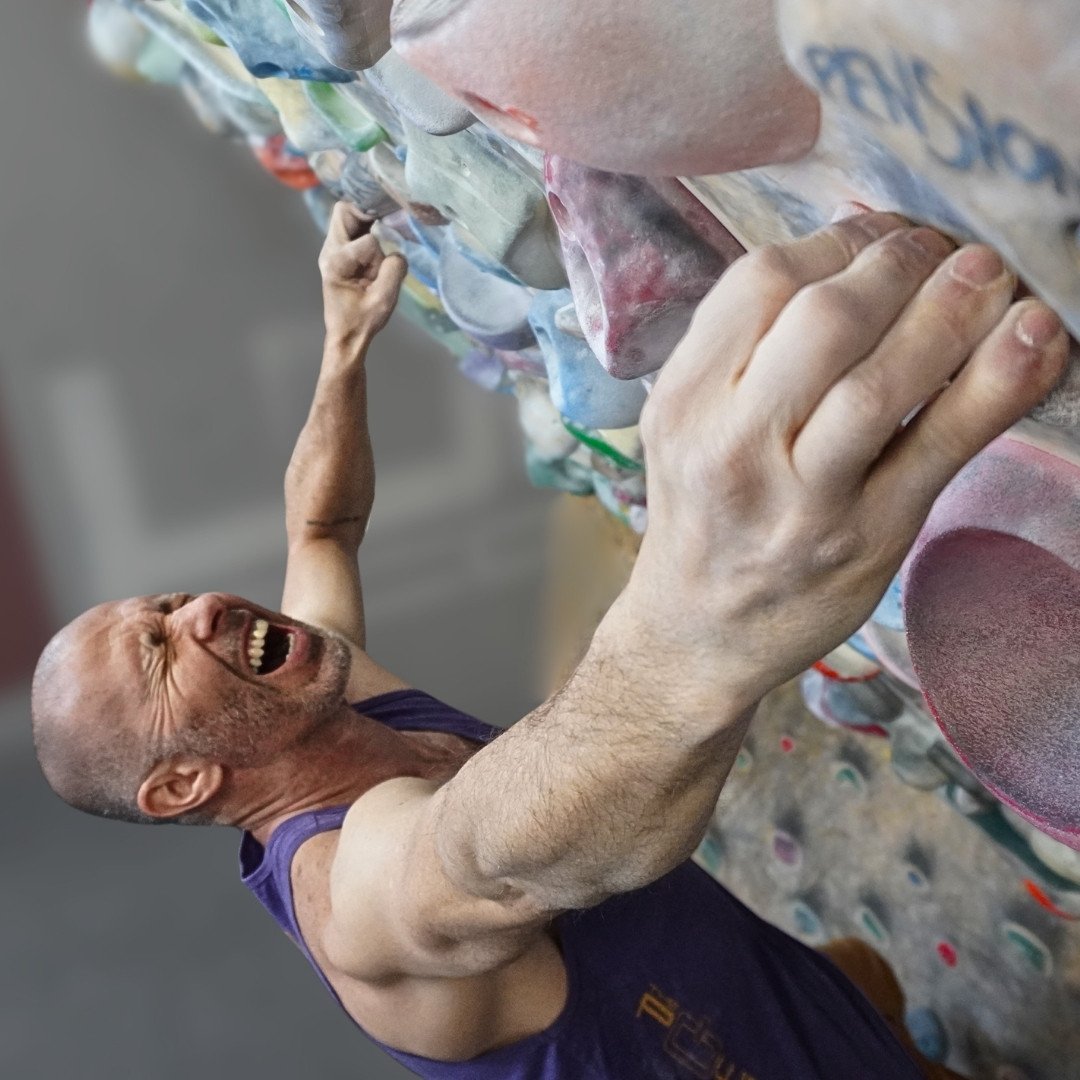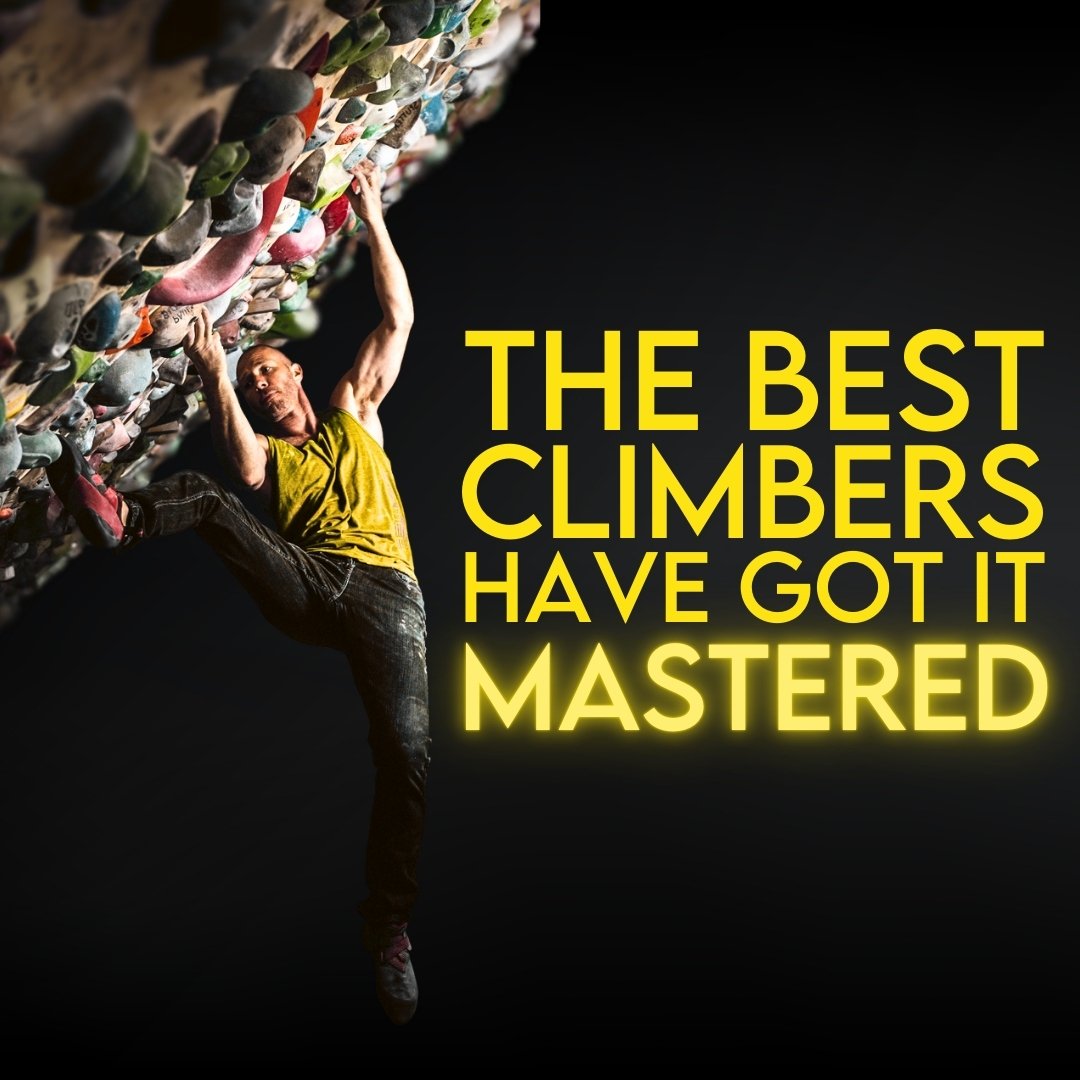What's Your Problem?
It’s rare to meet a climber who doesn’t have a laundry list of weaknesses they want to work on. Whether it’s weak hands, struggling on big moves, or pumping out on their project, most climbers have a decent idea of what’s holding them back.
Even though they know what their weaknesses are, many climbers still struggle to address them properly. One of the most common reasons for this is that the climbers don’t define the problem well enough from the start. The more accurately we define the issue, the easier it is to make the necessary improvements.
Consider the following:
“I’m out of shape.” - This doesn’t give us much to work with. It’s vague and could lead us to a whole mix of potential solutions that will give us, at best, mixed results.
Instead, what if you said, “I’ve been busy and haven’t made time for climbing,”? This suddenly gives us a problem to directly address. Is this busy time going to settle down or do you need to find a new way to schedule your climbing and training time? Maybe you need to consider more time-efficient training methods that weren’t necessary before now.
“I’m not a powerful climber.” - Does this person need more pull ups, campus boarding, time on the Tension Board, practice climbing more powerfully, maybe some heavy lifting to build a base of strength? Who knows?
Instead, what if someone says, “I spend all of my time climbing volume because it’s fun, and I don’t make getting stronger a priority in my training.”? Now we’ve got something to work with. High volume climbing, while fun and good for developing fundamental skills, often lacks the high-intensity efforts performed while well-recovered that is needed for power development. If this person spent one or two less days climbing high volume each week and replaced them with trying harder on a few powerful problems, they’d see great results without having to worry about a dozen different exercises they could be doing.

Sarah Brengosz climbing the classic Try Harder (V9) in Hueco Tanks. A climb that will regularly have people questioning what their problem is.
“I’m in a funk.” - This is the equivalent to saying you’re having bad luck. It makes it seem like it’s out of your control. Your progress in climbing is left up to the universe.
Instead, we could say, “I haven’t sent something new in weeks and that makes me unsure of where my climbing abilities and fitness are at right now.” This states the facts of the situation. Maybe you are trying harder climbs than normal. If that’s the case, then it makes sense that you won’t be sending as often. It’s also possible you aren’t going back to the same climbs often enough to finish them. These are easy issues to address.
“My hands are weak.” - There are a million ways to get your hands stronger and fitter, and a multitude of grip types and edge sizes you could be addressing. This vague statement leads many people towards whatever method is most popular at the moment rather than what would best fit their needs.
Instead, you might say, “I feel decent on a lot of grip types, but I struggle crimping on really small incut holds.” This drastically narrows down your selection process. If you need to specifically get better at small incut crimps, then that should be where you put your climbing and training focus.
The more accurately we define our problems, the more approachable it will feel to find solutions. If you’re aware of a weakness, but only vaguely, try asking yourself, “How does this show up in my climbing?”. Be specific. What scenarios do you notice these weaknesses show up in the most? The more simple the solution, the less intimidating these problems become to address.
If you’re looking for help with defining your weaknesses, great places to start are asking your climbing partners what they see, shooting video of yourself for an extra perspective, or reaching out to a coach for their advice.

There is a point at which continuing a tactical approach can slow your climbing gains.
Toe-hooking can seem more like sorcery than other techniques, but you’re probably just going about it the wrong way.
Implementing this one simple thing can result in big performance gains in your climbing, no matter what level you’re at.
Despite being constantly present and often the reason we fail, Rhythm is the most underrated of the Atomic Elements of Climbing Movement.
Long-time friends Nate and Ravioli Biceps discuss lessons they’ve pulled from video gaming that can help inform our climbing.
There’s A LOT of great information out there on how to climb harder. But it’s tough to sort through…
Short climbers are good at getting scrunchy, and tall climbers are good at climbing extended, right? Wrong.
One of the most common places things start to fall apart is at the very beginning of the move.
We know spending time on a finishing link is smart tactics for hard climbs. So why not apply the same concept to individual moves?
Learning when and how to compensate for a weakness is a skill. And skills need to be practiced.
Lowball boulders, while not as proud, can still teach us new movement, new ways to utilize tension, and force us into finding new techniques.
I never thought I’d be recommending this, but some of y’all should be putting less effort into becoming technically better climbers.
Training principles are important, but when they creep into performance, your climbing will suffer. Nearly every time.
We have become collectors of dots. But there’s one major thing that happens when we connect dots that is entirely lost in mass dot collection: critical thinking.
Do you really have terrible willpower? Or are you surrounded by distractions and obstacles?
You have a climbing trip coming up. The rock is different. The style is different. Your pre-trip time is short and the number of days you’ll be climbing, even shorter…
Giving artificially low grades to climbs increases their perceived value for our training and development. The more something is mis-graded the more we naturally want to prioritize it.
Discussion around grades can be so polarizing that many of us avoid the topic.
Climbing starts off as this self-feeding cycle that has you wishing you could climb seven days a week. What happens when this cycle stops bringing improvement though?
Use strength to leverage every other aspect of your climbing, not replace them.
If everything you do is a finger workout, then when do your hands get a chance to recover?






























There’s one often overlooked thing that has the power to positively – or negatively – affect every single day of climbing for the rest of your life.